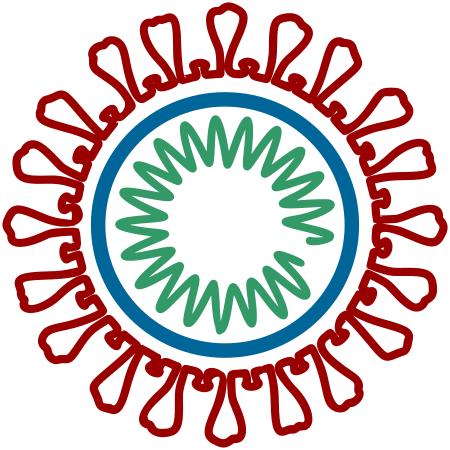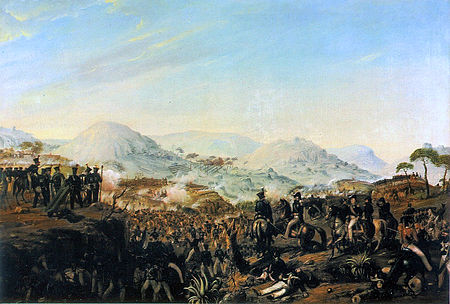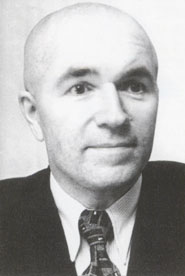|
برنامج التسلح النووي الألماني
بدأ البرنامج النووي الألماني النازي المعروف بـ نادي اليورانيوم (بالألمانية: Uranverein)، في أبريل 1939، بعد شهور قليلة من اكتشاف عملية الانشطار النووي في يناير 1939، وتحت رعاية مكتب ذخائر الجيش الألماني أثناء الحرب العالمية الثانية. توسع البرنامج ليضم مفاعلًا نوويًا وإنتاج اليورانيوم والماء الثقيل وفصل نظائر اليورانيوم. خلُص البرنامج إلى أن الانشطار النووي لن يسهم إسهامًا كبيرًا في إنهاء الحرب. في يناير 1942، انتقلت تبعية البرنامج من مكتب ذخائر الجيش الألماني إلى مجلس أبحاث الرايخ، لكنه استمرت في تمويل البرنامج. في ذاك الوقت، كان البرنامج قد انقسم إلى تسعة إدارات كبرى حيث هيمنت على البحث وحددت أهداف خاصة بها، تزامن ذلك مع تناقص أعداد العلماء الذين يعملون على الانشطار النووي لمشاركة بعضهم في بعض الأنشطة العسكرية الأخرى.
كان أكثر الأشخاص نفوذًا في البرنامج، كورت ديبنر وأبراهام إيسو وفالتر غرلاخ وإريك شومان؛ هذا الأخير كان أحد أقوى علماء الفيزياء تأثيرًا في ألمانيا. ساهم ديبنر طوال فترة البرنامج النووي في أبحاث الانشطار النووي أكثر مما فعل فالتر بوته وكلاوس كلاوسيوس وأوتو هان وبول هارتك وفيرنر هايزنبيرغ. عُين أبراهام إيسو مفوضًا من قبل هيرمان غورينغ لأبحاث الفيزياء النووية في ديسمبر 1942؛ وخلفه فالتر غرلاخ في ديسمبر 1943.
سيّس النظام النازي الألماني الأنشطة الأكاديمية، مما دفع العديد من علماء الفيزياء والرياضيات للفرار من ألمانيا منذ عام 1933. ثم تم إقصاء العلماء اليهود الذين لم يغادروا من المؤسسات الألمانية، مما أضعف الأنشطة الأكاديمية. كما ساهم تسييس الجامعات حيث تم تجنيد العديد من العلماء والفنيين، على الرغم من امتلاك لمهارات مفيدة، في القضاء على جيل من علماء الفيزياء.[1] ومع نهاية الحرب، تنافست دول الحلفاء على الحصول على المكونات الباقية للصناعة النووية سواءً الأفراد أو المرافق أو الخامات، كما فعلوا مع البرنامج في-2.
اكتشاف الانشطار النووي
أرسل الكيميائي الألماني أوتو هان ومساعده فريتز شتراسمان في ديسمبر 1938، مسودة إلى دورية العلوم الألمانية علوم الطبيعية (Naturwissenschaften»») تفيد بأنهم اكتشفوا عنصر الباريوم وحددوه بعد رجم اليورانيوم بالنيوترونات. نُشر مقالهم في 6 يناير 1939. في 19 ديسمبر 1938، أي قبل ثمانية عشر يومًا من النشر، أبلغ أوتو هان بهذه النتائج واستنتاجه بشأن انفجار نواة اليورانيوم في رسالة إلى زميلته وصديقته ليز مايتنر، التي فرت من ألمانيا في يوليو إلى هولندا ثم إلى السويد. أكدت مايتنر وابن أخيها أوتو روبرت فريش استنتاج هان بشأن الانفجار وفسرا النتائج بشكل صحيح بأنها «انشطار نووي» وهو مصطلح صاغه فريتش. أكد فريتش هذا بشكل تجريبي في 13 يناير 1939.
نادي اليورانيوم الأول
أبلغ جورج جوس، إلى جانب هانلي في 22 أبريل 1939، بعد سماع ورقة ندوة بحثية لفيلهلم هانلي اقترح فيها استخدام انشطار اليورانيوم في آلة اليورانيوم (أي المفاعل النووي)، فيلهلم دامز في وزارة الرايخ للعلوم والتربية والثقافة ( آر إي إم) بالتطبيقات العسكرية المحتملة للطاقة النووية. ضمت المجموعة الفيزيائيين فالتر بوته، وروبرت دوبل، وهانز غايغر، وولفغانغ غينتنر (الذي ربما أرسله فالتر بوته)، وفيلهلم هانلي، وجيرهارد هوفمان وجورج جوس، وكان بيتر ديباي مدعوًا، لكنه لم يحضر. بعد ذلك، بدأ جوس وهانلي وزميلهما راينهولد مانكوف العمل غير الرسمي في جامعة جورج أوغست في غوتنغن، كانت مجموعة الفيزيائيين معروفة بشكل غير رسمي باسم نادي اليورانيوم الأول ورسميًا باسم مجموعة عمل الفيزياء النووية. أوقف عمل المجموعة في أغسطس 1939، عندما استدعي الثلاثة للتدريب العسكري.[2][3][4][5]
مبادرات عام 1939 الأخرى
كان باول هارتيك مديرًا لقسم الكيمياء الفيزيائية بجامعة هامبورغ ومستشارًا لمكتب ذخائر الجيش (إتش دبليو إيه). في 24 أبريل 1939، اتصل هارتيك، إلى جانب المدرس المساعد له فيلهلم غروث، بوزارة دفاع الرايخ (آر كيه إم) لتنبيههم إلى إمكانات التطبيقات العسكرية للتفاعلات النووية المتسلسلة. أدت هذه المبادرة، في وقت لاحق من العام، إلى نادي اليورانيوم الثاني. قبل يومين، كان جوس وهانلي قد اتصلا بوزارة الرايخ للعلوم والتربية والثقافة، الذي أدى إلى نادي اليورانيوم الأول.
امتلكت الشركة الصناعية أورغزيلشافت كمية كبيرة من اليورانيوم «المستنفد» الذي استُخرج منه الراديوم. بعد قراءة سيغفريد فلوج ورقة يونيو 1939 البحثية، حول الاستخدام التقني للطاقة النووية من اليورانيوم، أدرك نيكولاس ريل، رئيس المركز العلمي في أورغزيلشافت، أن هناك فرصة عمل للشركة، توجه في يوليو إلى مكتب ذخائر الجيش لمناقشة إنتاج اليورانيوم. اهتم مكتب ذخائر الجيش بذلك وخصص ريل موارد الشركة لهذه المهمة. أصدر مكتب ذخائر الجيش أخيرًا أمرًا بإنتاج أكسيد اليورانيوم، وأُجري في محطة أورغزيلشافت في أورانينبورغ، شمال برلين.[6][7][8][9]
نادي اليورانيوم الثاني
بدأ نادي اليورانيوم الثاني بعد استبعاد مكتب ذخائر الجيش لمجلس أبحاث الرايخ ( آر إف آر) التابع لوزارة تعليم الرايخ، وبدأ مشروع الأسلحة النووية الرسمي الألماني تحت رعاية عسكرية. تشكل نادي اليورانيوم الثاني هذا في 1 سبتمبر عام 1939، وهو اليوم الذي بدأت فيه الحرب العالمية الثانية، وعُقد أول اجتماع له في 16 سبتمبر 1939. نظم كرت ديبنر، مستشار مكتب ذخائر الجيش هذا الاجتماع، الذي عقد في برلين. وكان من بين المدعوين فالتر بوته، وسيغفريد فلوج، وهانز غايغر، وأوتو هان، وباول هارتيك، وجيرهارد هوفمان، وجوزيف ماتاوش وجورج ستتر. وعُقد اجتماع ثانٍ بعد ذلك بوقت قصير شمل كلاوس كلوسيوس، وروبرت دوبل، وفيرنر هايزنبيرغ، وكارل فريدريش فون فايزاكر. وفي هذا الوقت أيضًا، وضع معهد القيصر فيلهلم للفيزياء (كيه دبليو آي بّي، معهد ماكس بلانك للفيزياء بعد الحرب العالمية الثانية) في برلين داليم تحت سلطة مكتب ذخائر الجيش، مع تعيين ديبنر مديرًا إداريًا. وبدأت السيطرة العسكرية على البحوث النووية.[10]
قال هايزنبيرغ عام 1939 إن الفيزيائيين في الاجتماع (الثاني) قالوا إنه من حيث المبدأ يمكن صنع قنابل ذرية ... سيستغرق الأمر سنوات ... ليس قبل خمس سنوات. قال لم أبلغ الفوهرر بذلك إلا بعد أسبوعين وبشكل غير رسمي للغاية لأنني لم أرد أن يهتم الفوهرر لدرجة أن يطلب جهودًا كبيرة على الفور لصنع القنبلة الذرية. شعر شبير أنه من الأفضل إلغاء الأمر برمته واستجاب الفوهرر بالطريقة نفسها أيضًا. قال إنهم عرضوا الأمر بهذه الطريقة للحفاظ على سلامتهم الشخصية إذ إن احتمال النجاح كان صفرًا تقريبًا، ولكن إن لم يطور عدة آلاف الأشخاص شيئًا، فقد يكون لذلك عواقب وخيمة للغاية علينا. لذا قلبنا الموقف للاستفادة من الحرب في الفيزياء لا للاستفادة من الفيزياء في الحرب، سأل إرهارد ميلخ عن المدة التي ستستغرقها أمريكا فقيل له عام 1944 رغم اعتقاد المجموعة بين أنفسنا أن الأمر سيستغرق وقتًا أطول، ثلاث أو أربع سنوات.
عندما اتضح أن مشروع الأسلحة النووية لن يقدم مساهمة حاسمة في إنهاء الحرب على المدى القريب، أُعيدت السيطرة على معهد القيصر فيلهلم للفيزياء في يناير 1942 إلى منظمتها الجامعة، جمعية القيصر فيلهلم (كيه دبليو جي)، أو جمعية ماكس بلانك بعد الحرب العالمية الثانية. انتقلت سيطرة مكتب ذخائر الجيش على المشروع لاحقًا إلى مجلس أبحاث الرايخ في يوليو 1942. بعد ذلك، حافظ مشروع الأسلحة النووية على مكانته في الجهود الحربية (كريغزفيشتيش)، واستمر تمويله من الجيش، ولكن قُسم بعد ذلك إلى مجالات إنتاج اليورانيوم والماء الثقيل، وفصل نظائر اليورانيوم، وآلة اليورانيوم (المفاعل النووي). في الواقع، قسم بين المعاهد، فسيطر المديرون المختلفون على البحث ووضعوا جداول أعمال بحثية خاصة بهم. وفيما يلي الموظفون والمرافق ومجالات البحث المسيطرون:[11][12][13]
- فالتر بوته: مدير معهد الفيزياء في معهد القيصر فيلهلم للبحوث الطبية (KWImF)، أو معهد ماكس بلانك للبحوث الطبية) بعد 1948، في هايدلبرغ.
- حساب الثوابت النووية. 6 فيزيائيين
- كلاوس كلوسيوس: مدير معهد الكيمياء الفيزيائية بجامعة لودفيغ ماكسيميليان في ميونخ.
- فصل النظائر وإنتاج الماء الثقيل. 4 كيميائيين فيزيائيين وفيزيائيين تقريبًا
- كرت ديبنر: مدير محطة اختبار مكتب ذخائر الجيش في غوتو ومحطة مجلس أبحاث الرايخ التجريبية في شتاتيلم، تورينغيا؛ وكان أيضًا مستشارًا لمكتب ذخائر الجيش في الفيزياء النووية.
- قياس الثوابت النووية. 6 فيزيائيين تقريبًا
- أوتو هان: مدير معهد القيصر فيلهلم للكيمياء (كيه دبليو آي سي، لاحقًا معهد ماكس بلانك للكيمياء، معهد أوتو هان بعد الحرب العالمية الثانية)، في برلين داليم.
- عناصر ما بعد اليورانيوم ومنتجات الانشطار وفصل النظائر وقياس الثوابت النووية. 6 كيميائيين وفيزيائيين تقريبًا.
- باول هارتيك: مدير قسم الكيمياء الفيزيائية في جامعة هامبورغ.
- إنتاج الماء الثقيل وإنتاج النظائر. 5 كيميائيين فيزيائيين وفيزيائيين وكيميائيين
- فيرنر هايزنبيرغ: مدير قسم الفيزياء النظرية في جامعة لايبتزغ حتى صيف 1942؛ ولاحقًا القائم بأعمال مدير معهد القيصر فيلهلم للفيزياء، في برلين داليم.
- آلة اليورانيوم، وفصل النظائر، وقياس الثوابت النووية. 7 فيزيائيين وكيميائيين فيزيائيين تقريبًا
- هانز كوبفيرمان: مدير المعهد الثاني للفيزياء التجريبية في جامعة جورج أوغست في غوتنغن.
- فصل النظائر. فيزيائيين
- نيكولاس ريل: المدير العلمي لأورغزيلشافت.
- إنتاج اليورانيوم. 3 فيزيائيين وكيميائيين فيزيائيين تقريبًا
- جورج ستيتر: مدير معهد الفيزياء الثاني في جامعة فيينا.
عناصر ما بعد اليورانيوم وقياس الثوابت النووية. 6 فيزيائيين وكيميائيين فيزيائيين تقريبًا [14]
مراجع
مصادر
- Bernstein, Jeremy Hitler’s Uranium Club: The Secret Recording’s at Farm Hall (Copernicus, 2001) ISBN 0-387-95089-3
- Bernstein, Jeremy Heisenberg and the critical mass, Am. J. Phys. Volume 70, Number 9, 911-916 (2002)
- Bernstein, Jeremy Heisenberg in Poland, Am. J. Phys. Volume 72, Number 3, 300-304 (2004). See also Letters to the Editor by Klaus Gottstein and a reply by Jeremy Bernstein in Am. J. Phys. Volume 72, Number 9, 1143-1145 (2004).
- Beyerchen, Alan D. Scientists Under Hitler: Politics and the Physics Community in the Third Reich (Yale, 1977) ISBN 0-300-01830-4
- Gimbel, John U.S. Policy and German Scientists: The Early Cold War, Political Science Quarterly Volume 101, Number 3, 433-451 (1986)
- Gimbel, John Science, Technology, and Reparations: Exploitation and Plunder in Postwar Germany (Stanford, 1990)
- Goudsmit, Samuel with an introduction by Reginald Victor Jones Alsos (Toamsh, 1986)
- Heisenberg, Werner Research in Germany on the Technical Applications of Atomic Energy, Nature Volume 160, Number 4059, 211-215 (August 16, 1947). See also the annotated English translation: Document 115. Werner Heisenberg: Research in Germany on the Technical Application of Atomic Energy [August 16, 1947] in Hentschel, Klaus (editor) and Ann M. Hentschel (editorial assistant and translator) Physics and National Socialism: An Anthology of Primary Sources (Birkhäuser, 1996) 361-379.
- Hentschel, Klaus (editor) and Ann M. Hentschel (editorial assistant and translator) Physics and National Socialism: An Anthology of Primary Sources (Birkhäuser, 1996) ISBN 0-8176-5312-0. [This book is a collection of 121 primary German documents relating to physics under National Socialism. The documents have been translated and annotated, and there is a lengthy introduction to put them into perspective.]
- Hoffmann, Dieter Between Autonomy and Accommodation: The German Physical Society during the Third Reich, Physics in Perspective 7(3) 293-329 (2005)
- Kant, Horst Werner Heisenberg and the German Uranium Project / Otto Hahn and the Declarations of Mainau and Göttingen, Preprint 203 (Max-Planck Institut für Wissenschaftsgeschichte, 2002)
- Landsman, N. P. Getting even with Heisenberg, Studies in History and Philosophy of Modern Physics Volume 33, 297-325 (2002)
- Macrakis, Kristie Surviving the Swastika: Scientific Research in Nazi Germany (Oxford, 1993)
- Mehra, Jagdish and Helmut Rechenberg The Historical Development of Quantum Theory. Volume 6. The Completion of Quantum Mechanics 1926-1941. Part 2. The Conceptual Completion and Extension of Quantum Mechanics 1932-1941. Epilogue: Aspects of the Further Development of Quantum Theory 1942-1999. (Springer, 2001) ISBN 978-0-387-95086-0
- Norman Naimark The Russians in Germany: A History of the Soviet Zone of Occupation, 1945-1949 (Belkanp, 1995)
- Nikolaus Riehl and Frederick Seitz Stalin’s Captive: Nikolaus Riehl and the Soviet Race for the Bomb (American Chemical Society and the Chemical Heritage Foundations, 1996) ISBN 0-8412-3310-1.
- Oleynikov, Pavel V. German Scientists in the Soviet Atomic Project, The Nonproliferation Review Volume 7, Number 2, 1 – 30 (2000). The author has been a group leader at the Institute of Technical Physics of the Russian Federal Nuclear Center in Snezhinsk (Chelyabinsk-70).
- Walker, Mark German National Socialism and the Quest for Nuclear Power 1939–1949 (Cambridge, 1993) ISBN 0-521-43804-7
- Walker, Mark Eine Waffenschmiede? Kernwaffen- und Reaktorforschung am Kaiser-Wilhelm-Institut für Physik, Forschungsprogramm „Geschichte der Kaiser-Wilhelm-Gesellschaft im Nationalsozialismus“ Ergebnisse 26 (2005)
- Albrecht, Ulrich, Andreas Heinemann-Grüder, and Arend Wellmann Die Spezialisten: Deutsche Naturwissenschaftler und Techniker in der Sowjetunion nach 1945 (Dietz, 1992, 2001) ISBN 3-320-01788-8
- Bernstein, Jeremy and David Cassidy Bomb Apologetics: Farm Hall, August 1945, Physics Today Volume 48, Issue 8, Part I, 32-36 (1995)
- Beyerchen, Alan What We Know About Nazism and Science, Social Research Volume 59, Number 3, 615-641 (1992)
- Bethe, Hans A. The German Uranium Project, Physics Today Volume 53, Issue 7, 34-36
- Cassidy, David C. Heisenberg, German Science, and the Third Reich, Social Research Volume 59, Number 3, 643-661 (1992)
- Cassidy, David C. Uncertainty: The Life and Science of Werner Heisenberg (Freeman, 1992)
- Cassidy, David C. A Historical Perspective on Copenhagen, Physics Today Volume 53, Issue 7, 28 (2000). See also Heisenberg’s Message to Bohr: Who Knows, Physics Today Volume 54, Issue 4, 14ff (2001), individual letters by Klaus Gottstein, Harry J. Lipkin, Donald C. Sachs, and David C. Cassidy.
- Eckert, Michael Werner Heisenberg: controversial scientist physicsweb.org (2001)
- Heisenberg, Werner Die theoretischen Grundlagen für die Energiegewinnung aus der Uranspaltung, Zeitschrift für die gesamte Natruwiessenschaft, Volume 9, 201-212 (1943). See also the annotated English translation: Document 95. Werner Heisenberg. The Theoretical Basis for the Generation of Energy from Uranium Fission [February 26, 1942] in Hentschel, Klaus (editor) and Ann M. Hentschel (editorial assistant and translator) Physics and National Socialism: An Anthology of Primary Sources (Birkhäuser, 1996) 294-301.
- Heisenberg, Werner, introduction by David Cassidy, translation by William Sweet A Lecture on Bomb Physics: February 1942, Physics Today Volume 48, Issue 8, Part I, 27-30 (1995)
- Hentschel, Klaus The Mental Aftermath: The Mentality of German Physicists 1945-1949 (Oxford, 2007)
- Hoffmann, Dieter Zwischen Autonomie und Anpassung: Die Deutsche Physikalische Gesellschaft im Dritten Reich, Max-Planck-Institut für Wissenschafts Geschichte Preprint 192 (2001)
- Hoffmann, Dieter and Mark Walker The German Physical Society Under National Socialism, Physics Today 57(12) 52-58 (2004)
- Hoffmann, Dieter Between Autonomy and Accommodation: The German Physical Society during the Third Reich, Physics in Perspective 7(3) 293-329 (2005)
- Hoffmann, Dieter and Mark Walker Zwischen Autonomie Und Anpassung, Physik Journal Volume 5, Number 3, 53-58 (2006)
- Hoffmann, Dieter and Mark Walker Peter Debye: “A Typical Scientist in an Untypical Time” Deutsche Physikalische Gesellschaft (2006)
- Hoffmann, Dieter and Mark Walker (editors) Physiker Zwischen Autonomie Und Anpassung (Wiley-VCH, 2007)
- Rainer Karlsch Hitlers Bombe. Die geheime Geschichte der deutschen Kernwaffenversuche. (Dva, 2005)
- Karlsch, Rainer and Heiko Petermann Für und Wider “Hitlers Bombe” (Waxmann, 2007)
- Krieger, Wolfgang The Germans and the Nuclear Question German Historical Institute Washington, D.C., Occasional Paper No. 14 (1995)
- Boris Pash The Alsos Mission (Award, 1969)
- Powers, Thomas Heisenberg’s War: The Secret History of the German Bomb (Knopf, 1993)
- Renneberg, Monika and Mark Walker Science, Technology and National Socialism (Cambridge, 1994, first paperback edition 2002)
- Richard Rhodes The Making of the Atomic Bomb (Simon and Schuster, 1986)
- Rose, Paul Lawrence, Heisenberg and the Nazi Atomic Bomb Project: A Study in German Culture (California, 1998). For a critical review of this book, please see: Landsman, N. P. Getting even with Heisenberg, Studies in History and Philosophy of Modern Physics Volume 33, 297-325 (2002).
- Schaaf, Michael Heisenberg, Hitler und die Bombe. Gespraeche mit Zeitzeugen. (GNT-Verlag, 2001)
- Schumann, Erich Wehrmacht und Froschung in Richard Donnevert (editor) Wehrmact und Partei second expanded edition, (Barth, 1939) 133-151. See also the annotated English translation: Document 75. Erich Schumann: Armed Forces and Research [1939] in Hentschel, Klaus (editor) and Ann M. Hentschel (editorial assistant and translator) Physics and National Socialism: An Anthology of Primary Sources (Birkhäuser, 1996) 207-220.
- Sime, Ruth Sime From Exceptional Prominence to Prominent Exception: Lise Meitner at the Kaiser Wilhelm Institute for Chemistry Ergebnisse 24 Forschungsprogramm Geschichte der Kaiser-Wilhelm-Gesellschaft im Nationalsozialismus (2005).
- Ruth Lewin Sime The Politics of Memory: Otto Hahn and the Third Reich, Physics in Perspective Volume 8, Number 1, 3-51 (2006). Sime is retired from teaching chemistry at Sacramento City College.
- Walker, Mark National Socialism and German Physics, Journal of Contemporary Physics Volume 24, 63-89 (1989)
- Walker, Mark Heisenberg, Goudsmit and the German Atomic Bomb, Physics Today Volume 43, Issue 1, 52-60 (1990)
- Walker, Mark Nazi Science: Myth, Truth, and the German Atomic Bomb (Perseus, 1995)
- Walker, Mark German Work on Nuclear Weapons, Historia Scientiarum; International Journal for the History of Science Society of Japan, Volume 14, Number 3, 164-181 (2005)
- Walker, Mark Eine Waffenschmiede? Kernwaffen- und Reaktorforschung am Kaiser-Wilhelm-Institut für Physik, Forschungsprogramm „Geschichte der Kaiser-Wilhelm-Gesellschaft im Nationalsozialismus“ Ergebnisse 26 (2005)
- Mark Walker Otto Hahn: Responsibility and Repression, Physics in Perspective Volume 8, Number 2, 116-163 (2006). Mark Walker is Professor of History at Union College in Schenectady, New York.
ملاحظات
- ^ Judt، Matthias (1996). Technology transfer out of Germany after 1945. Routledge. ص. 55.
- ^ Hentschel and Hentschel, 1996, 363–364 and Appendix F; see the entries for Esau, Harteck and Joos. See also the entry for the KWIP in Appendix A and the entry for the HWA in Appendix B.
- ^ Macrakis, 1993, 164–169.
- ^ Mehra and Rechenberg, Volume 6, Part 2, 2001, 1010–1011.
- ^ Kant, 2002, Reference 8 on p. 3.
- ^ Riehl and Seitz, 1996, 13.
- ^ Hentschel and Hentschel, 1996, 369, Appendix F, see the entry for Riehl, and Appendix D, see the entry for Auergesellschaft.
- ^ Also see: Siegfried Flügge Die Ausnutzung der Atomenergie. Vom Laboratoriumsversuch zur Uranmaschine – Forschungsergebnisse in Dahlem, Deutsche Allgemeine Zeitung No. 387, Supplement (15 August 1939). English translation: Document No. 74 Siegfried Flügge: Exploiting Atomic Energy. From the Laboratory Experiment to the Uranium Machine – Research Results in Dahlem [15 August 1939] in Hentschel, Klaus (Editor) and Ann M. Hentschel (Editorial Assistant and Translator) Physics and National Socialism: An Anthology of Primary Sources (Birkhäuser, 1996) pp. 197–206. [This article is Flügge's popularized version of the June 1939 article in Die Naturwissenschaften.]
- ^ Siegfried Flügge Kann der Energieinhalt der Atomkerne technisch nutzbar gemacht werden?, علوم الطبيعة Volume 27, Issues 23/24, 402–10 (9 June 1939).
- ^ Hentschel and Hentschel, 1996, 363–364 and Appendix F; see the entries for Diebner and Döpel. See also the entry for the KWIP in Appendix A and the entry for the HWA in Appendix B.
- ^ Deutsches Museum "Geheimdokumente zu den Forschungszentren": Gottow, Hamburg, Berlin, Leipzig und Wien, Heidelberg, Straßburg نسخة محفوظة 7 سبتمبر 2019 على موقع واي باك مشين.
- ^ Kant, 2002, 19.
- ^ Walker, 1993, 52–53.
- ^ Walker, 1993, 52 and Reference No. 40 on p. 262.
وصلات خارجية
|
|




















